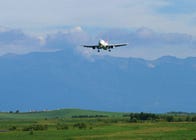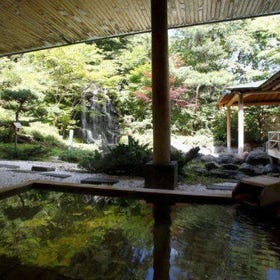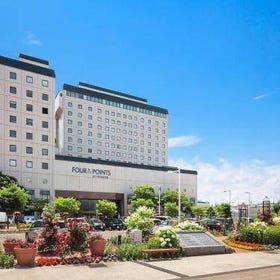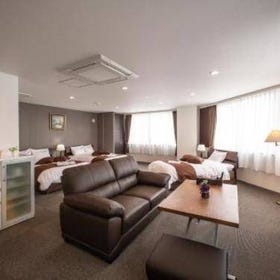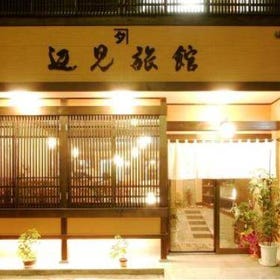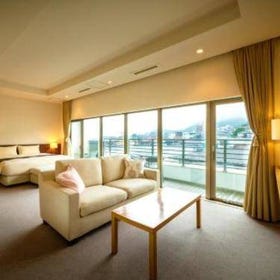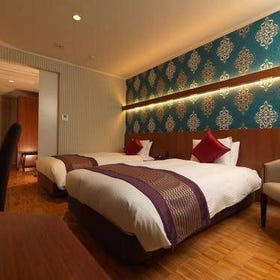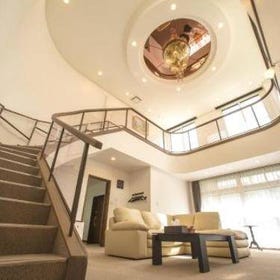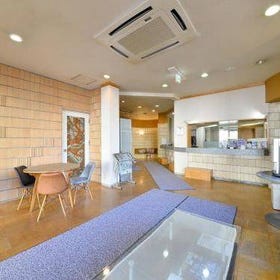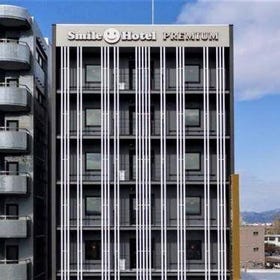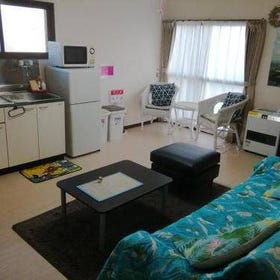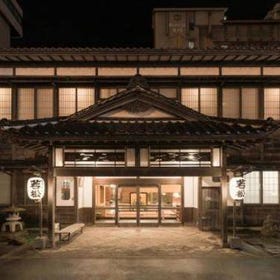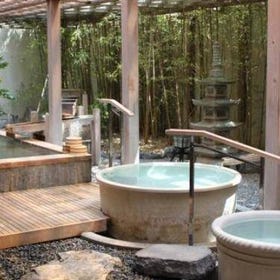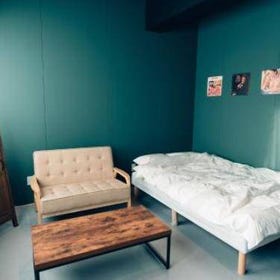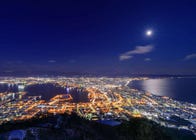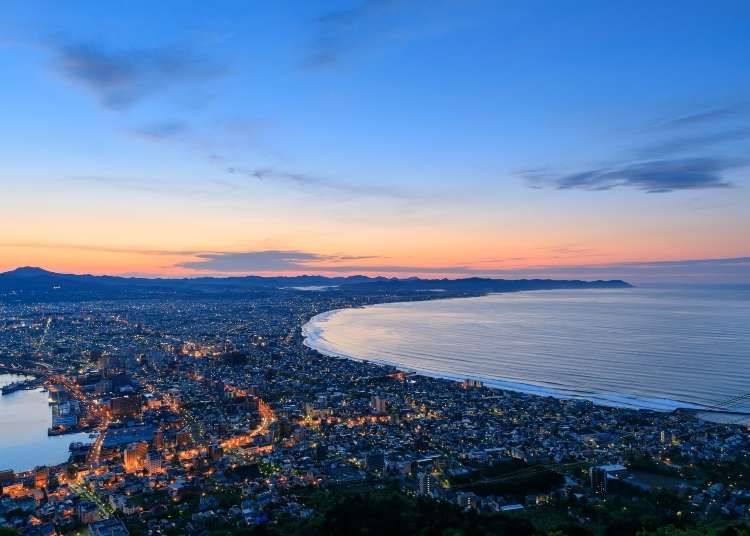
Hakodate is a beautiful city on the southern tip of Hokkaido. It holds the unique characteristic of being like a gateway to Hokkaido. This port city is the last stop on the Tohoku-Hokkaido Shinkansen (bullet train) line, via Shin-Hakodate-Hokuto Station, and the first stop on the train network for onward travel into Hokkaido.
Here's all you need to know about where to stay in Hakodate on your next trip.
Main image: PIXTA
1. Getting to and from Hakodate

Currently, Hakodate is the final stop on the Shinkansen network, with regular trains connecting this city with the rest of Hokkaido.
You can use the Japan Rail Pass to reach Hakodate, but it is a 4-hour one-way trip on the JR Tohoku-Hokkaido Shinkansen from Tokyo to Shin-Hakodate-Hokuto. For onward travel to, for example, Sapporo, you can take a Hokuto Limited Express train which takes just over 3.5 hours.
From Tokyo, flying to Hakodate is a quicker option as it only takes around 90 minutes from Haneda Airport to Hakodate Airport. There are frequent flights operated by a number of different airlines. These airlines also enable travel to most other major cities in Japan.
Hakodate is also connected to the cities of Aomori and Oma by ferry. From Aomori, for example, the ferry takes 4 hours (o/w) and costs from 2,000 yen (without a bed).
Getting to Hakodate from the airport
Hakodate Airport is closer to Hakodate than Shin-Hakodate-Hokuto Station, being less than half the distance. Still, Hakodate Airport is not connected by rail to the city. The only choices are by car or by bus.
・Car: If you are planning to travel within Hokkaido, and Hakodate is your first stop, then you may wish to consider renting a car at the airport and doing a road trip around Hokkaido.
・Shuttle bus: The cheapest option to get from Hakodate Airport to Hakodate is to take the airport shuttle bus. It leaves every 20 to 40 minutes (please check the timetable in advance as it is subject to change) and can get you to JR Hakodate Station in around 20 minutes (450 yen o/w). This bus continues after JR Hakodate Station to Hakodate Kokusai Hotel and Hotel WBF Grande Hakodate making it a very convenient way of transferring to your accommodation if you are staying at either of these hotels.
Four regular bus routes go to other parts of the city, one of which goes to Shin-Hakodate-Hokuto Station.
Getting to sightseeing spots outside Hakodate
It is straightforward to describe Hakodate as a gateway port city because of how well connected it is in terms of planes, trains, automobiles, and ferries.
Although it is the last stop north on the Shinkansen network, that also makes it the starting station for going south, while there is a direct train line to Sapporo, the biggest city in Hokkaido and the north of Japan. This city is also on the Hakodate Main Line, which connects it with other major cities in Hokkaido, and goes as far north as Asahikawa (5.5 hours, 13,780 yen o/w).
As previously mentioned, Hakodate has ferries that head to Aomori, and Hakodate Airport facilities travel to most major cities in Japan.
Getting around Hakodate
One of the great aspects of Hakodate is how easy it is to get around using multiple forms of transport. Hakodate is rather expansive, so walking between sightseeing areas is challenging. If you were to walk from the fortress park of Goryokaku to Mt. Hakodate Observatory, it would take about 2 hours!
Instead, traveling by tram is recommended. The fare depends on the distance you travel, but you can get between all the locations covered in this guide (Hakodate Station, Jujigai, Goryokaku, and Hakodate Arena), plus much more. Please note that a one-day tram pass costs 600 yen, which is very convenient for a busy day of sightseeing.
Several bus routes go to the same locations and other areas in the city, and there is also a one-day bus pass ("Kanpass," 800 yen). You can also get a combined bus and tram pass (1,000 yen for one day, 1,700 yen for two days).
One train service runs through Hakodate (the Hakodate Liner), but this is more geared toward connecting JR Hakodate Station with Shin-Hakodate-Hokuto Station. Although this train line has a station called Goryokaku, note that the train station is a rather significant distance away from the actual Goryokaku Park!
In addition, the Mt. Hakodate Observatory is connected to the mountain's base by a ropeway. From mid-April to early November (basically when there is no snow), it is also possible to rent a bike from one of three locations: Hakodate Station, Jujigai, and Goryokaku.
2. What is Hakodate like?
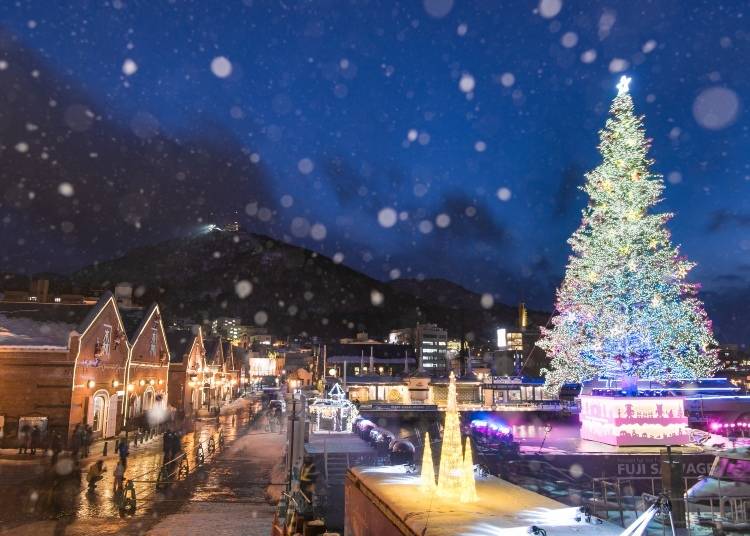
Hakodate is a charming city that is complemented by its location, surrounded by the sea, and by being next to Mt. Hakodate. While pounding the streets, you can discover a variety of historical buildings of both Japanese and European design. At the same time, both east and west of the city, you can enjoy walks along the city's beautiful coastline.
It is also a fantastic city for experiencing Japan's contrasting seasons, from the summer's heat to the snow-covered months of the winter. The different seasons also bring various festivals, from cherry blossoms to summer fireworks to lovely snow-covered Christmas decorations.
On top of this, Hakodate is also the perfect place to be for eating fresh seafood. Being right by the sea means you can get the best seafood! There is nothing better than riding the tram or walking the streets and seeing what you discover.
What's here? Why visit?
But what is there specifically to see in Hakodate? Well, the night view from Mt. Hakodate is one of the most famous in Japan – and this Instagrammable view alone is enough to warrant visiting this wonderful port city! To get to the Mt. Hakodate Ropeway, you need to go to Jujigai, which has the beautiful Western-style Kanemori Red Brick Warehouse and is also near Motomachi, a historical district of Hakodate.
You can enjoy seeing old churches and the Former British Consulate of Hakodate in this same district. In winter, these streets are also part of the Hakodate Illumination.
If you head out of the city center, you can visit Goryokaku, perhaps one of the more unique parks in Japan, as it was initially a fortress! This star-shaped park is visually stunning but also offers a relaxing stroll for travelers looking to chill out. In the spring, the more than 1,600 cherry blossom trees surrounding the park's moat burst into color with cherry blossoms. It is a sight that needs to be seen to be believed!
On top of the above, you can enjoy hot springs (known as onsen) such as Yunokawa Hot Springs, an area full of hotels and hot springs, and Hakodate Tropical Botanical Garden, which is famous for Japanese macaque monkeys that enjoy a nice hot bath themselves! This same area is close to Hakodate Arena and Hakodate Racecourse.
3. Where is the best area to stay in Hakodate City?
The following are the best, most convenient areas to stay in Hakodate, listed in rough order by priority, with most convenient places first.
1. JR Hakodate Station Area: Convenient access from the center of the city
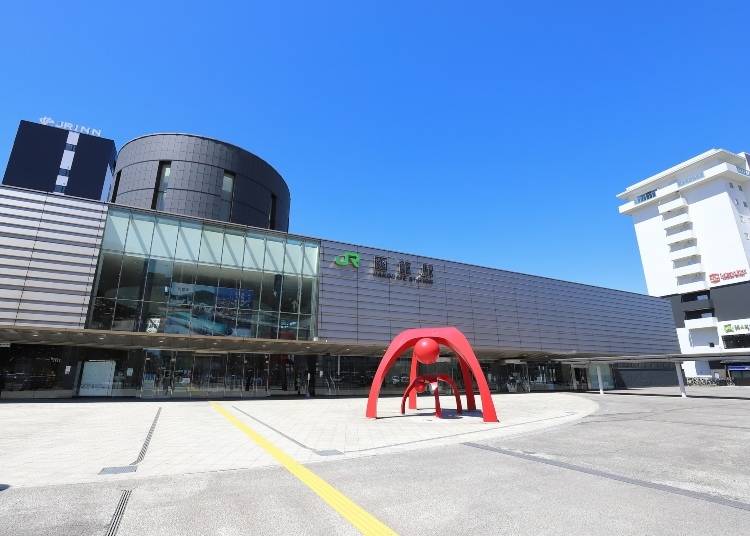
JR Hakodate Station is the most convenient place to stay in Hakodate as it is the center of all transportation, whether it be buses, trams, planes, trains, or bikes; you can find them all here.
If you are a traveler looking to maximize your time in this city, staying near JR Hakodate Station will make your life much easier. But this area is not just a station – staying around here allows you to reach the ocean in minutes and puts you within an easy walk of the Hakodate Morning Market, another tourist sight.
Getting to/around the JR Hakodate Station area
・JR Hakodate Station is directly connected to Hakodate Airport by bus, which takes just 20 minutes.
・As the center of transportation for the city, if you stay in accommodation in this area, you can quickly get to the airport, take a regular train to Sapporo or other cities in Hokkaido, and access the Shinkansen network via Shin-Hakodate-Hokuto Station.
・If you are planning a driving tour of Hokkaido; then it makes sense to start at the gateway to Hokkaido – Hakodate! In addition, if you have the time to spare and enjoy ship rides, then you can get to Aomori by ferry.
Why stay in the JR Hakodate Station area?
・The city center is in stark contrast to many other Japanese cities in how major streets are so wide (partly because of the tram line) and how the center has not become dominated by tall buildings.
・In terms of atmosphere, you can almost feel the city greeting you and saying, "welcome home."
What's there to see and do in the JR Hakodate Station area?
・It is perhaps very representative of the city that once you step out of the train station, you are confronted by the sight of Mt. Hakodate in the not very far distance while you can smell the sea which is literally a minute's walk away.
・Apart from the station and nearby port, you can enjoy the Hakodate Morning Market, which is full of restaurants, while the streets west toward Omori Beach are sprinkled with restaurants, hotels, and supermarkets.
・Omori Beach also offers excellent views of the sea and the opportunity to walk next to lapping waves.
2. Jujigai area (Central Hakodate): The best location for going to Mt. Hakodate
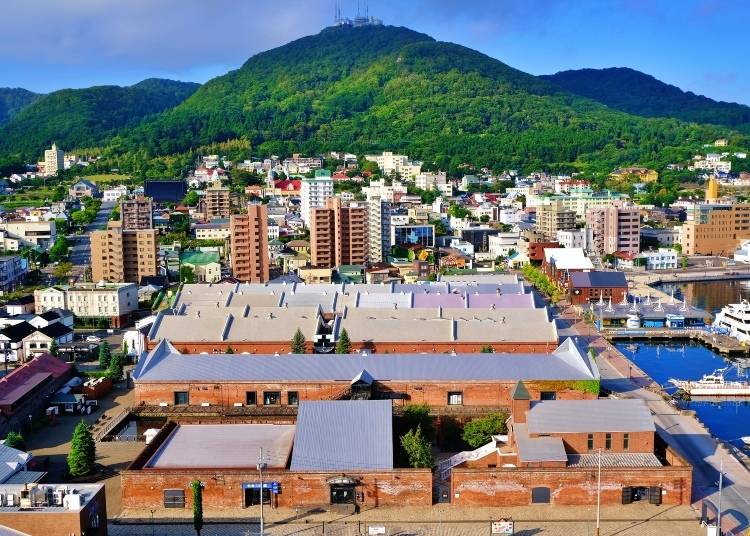
Three stops by tram from JR Hakodate Station, Jujigai puts you more in the center of the action, being close to the train station, a 9-minute walk to the Mt. Hakodate Ropeway, and just a few minutes walk from Motomachi – the historical center of Hakodate. You can also take the tram west to reach Omachi Station, and the island park Midori no Shima, or take it east to Yachigashira Station to get to Hakodate Park.
Getting to/around the Jujigai area
・The Hakodate Airport Shuttle Bus starts at Hotel WBF Grande Hakodate, which is a 5-minute walk from Jujigai Station – which makes this a very convenient place for accessing the airport too. The bus costs 460 yen (o/w) and takes about 40 minutes.
・A direct bus route to the airport, with JR Hakodate Station being minutes away by tram, makes Jujigai very convenient for traveling by plane or train elsewhere in Hokkaido or Japan.
Why stay in the Jujigai area?
・The area is characterized by the looming presence of Mt. Hakodate – which adds a vibe of nature to the city – while dripping with history due to the many old buildings nearby.
・Despite being in a very central location, it is quite a calm area, and as you head into Motomachi, you will be struck by the gently sloping tree-lined streets and the feeling of open space.
What's there to see and do in the Jujigai area?
・An absolute must-do for this area is to visit Mt. Hakodate; you can walk up, drive up or take the ropeway up. But whichever the case may be, the view from the top is breathtaking.
・During the day, you can gain a beautiful and far-reaching perspective of the city and beyond, but at night, as all the streetlights come on, it is simply amazing.
・If you head west, you can check out historical European churches such as the Catholic Church Hakodate Motomachi.
・Further west, you can visit the Former British Consulate of Hakodate and Perry's Square (a park commemorating Commodore Matthew C. Perry's visit to Hakodate in 1854).
・The east side features small eateries and the beach.
3. Goryokaku area: A beautiful star-shaped park
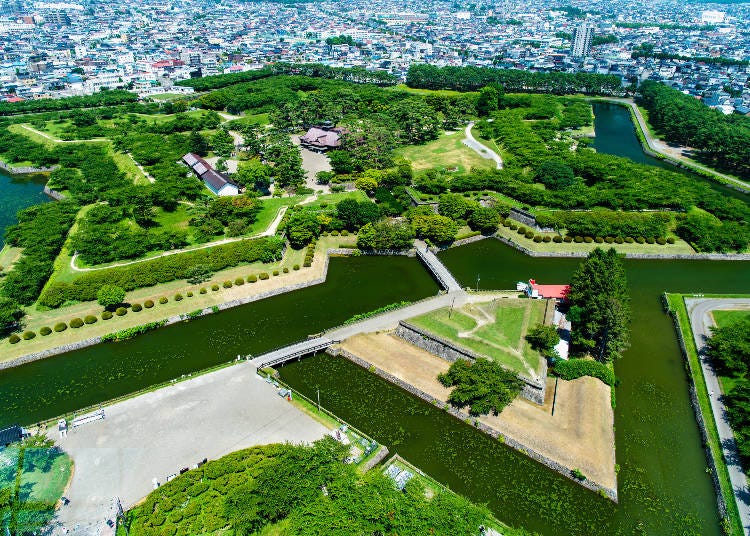
Goryokaku is quite a distance from Hakodate Station, Mt. Hakodate, and the port area, but it offers the absolutely spectacular sight of the park of Goryokaku. Built as a Western-style fortress to protect Hokkaido in 1855, it was designated as a park at the turn of the century.
Today, it is an impressive fortress of green in the summer and white in the winter, while in spring, it is surrounded by hundreds of cherry blossom trees. The wider area features restaurants, supermarkets, and museums.
Getting to/around the Goryokaku area
・The number 7 bus from Hakodate Airport goes directly to the park's west side, not too far from Goryokaku Tower (280 yen, 34 minutes o/w). However, unless your hotel is particularly near this area, it is pretty inconvenient to get to the airport. Going by taxi takes around 15 minutes, but this can cost nearly ten times as much as the bus.
・If you stay near the park, it is pretty inconvenient to travel outside and inside Hakodate. While the tram line and buses service this area, it is not very convenient for reaching the airport and certainly takes considerable time to get Hakodate Station for train services. Even the Goryokaku-Koen-Mae tram stop is a good 10-minute walk from the park.
・While there is a Goryokaku Station on the Hakodate Line, this station is also a considerable distance from the park itself, and there isn't a direct bus connecting the station with the park.
Why stay in the Goryokaku Park area?
・Goryokaku Park is beautiful, and even walking around the park is very relaxing.
・In the summer, you can escape the sun's heat by walking under the cherry trees, while in winter, it becomes like a magical white park.
・Outside of the park, you can find eateries, supermarkets, and cafes in pretty much any direction you walk in. Still, generally, it is a very suburban area that is dominated by family homes.
What's there to see and do in the Goryokaku Park area?
・Besides the park, the Goryokaku Tower provides beautiful views of the park and surrounding area.
・Adjoining the park, you can enjoy a bit of culture via the Hakodate Museum of Art Hokkaido and the Hakodateshi Hokuyo Museum.
・If you stay in accommodation closer to the train station or tram station, you will discover more bustling streets that offer more shopping opportunities.
4. Hakodate Arena Area: Enjoy Hakodate's hot spring area, with an arena to boot!
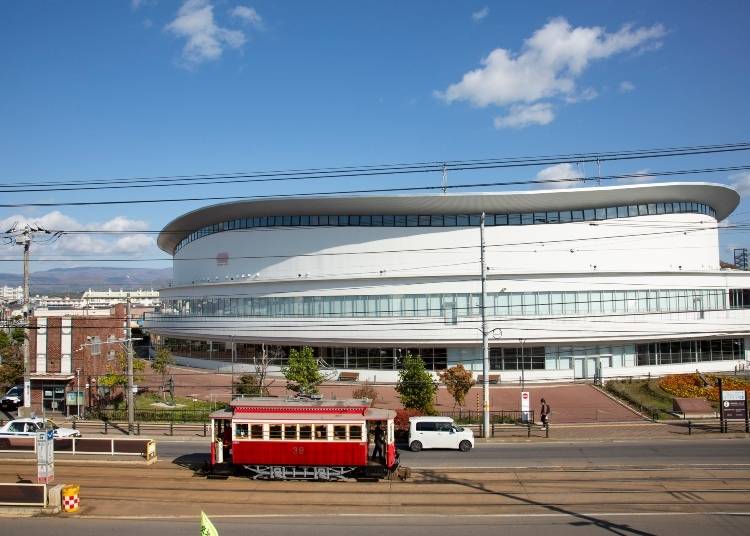
The area around Hakodate Arena, which is 8 minutes from Hakodate Airport and 15 minutes to JR Hakodate Station by bus (and 20 minutes by tram), has a very different vibe from the rest of the city. More specifically, this is where you need to come to enjoy sports, including both basketball and horse racing, and relax in a hot spring.
Getting to/around the Hakodate Arena area
・The Hakodate Airport Shuttle Bus stops at Yunokawa Hot Spring (230 yen, 8 minutes o/w); however, this is quite some distance from Hakodate Arena itself.
・Although you can quickly access this area by bus unless your hotel is closer to the ocean, you may face quite a walk.
・The area is also served by some local bus services, so if you are staying very close to Hakodate Arena, you can take a number 7 bus from the airport (240 yen, 15 minutes o/w).
・If you stay at a hotel near a bus line, then this area offers quick access to the airport and onward travel across Japan, which is also true if you stay near a bus stop that can connect you with JR Hakodate Station.
・There is also a tram stop near Hakodate Arena that goes to JR Hakodate Station. However, it has to be kept in mind that it not only takes time to travel to this train station but also you are dependent on bus/tram frequency.
Why stay in the Hakodate Arena area?
・Due to the number of sport venues, and the larger hot spring area, this part of the city feels quite different.
・Toward the sea, it is very suburban, while there are a lot of restaurants and shops clustered around the various tram stops, the racecourse, and the arena itself.
・This area is more suited for travelers who want to relax (and soak in a hot spring) or enjoy some sports.
・However, traveling around isn't the easiest part of the city as you rely on public transportation.
What's there to see and do in the Hakodate Arena area?
・Besides the arena and the Hakodate racecourse, which isn't far away, the Hakodate Tropical Botanical Garden is a big attraction for its hot springs that attract a unique type of clientele – monkeys!
・The wider area is mostly a mix of family homes and restaurants, and the hot springs make it a relaxing place.
When is the peak season for visiting Hakodate?
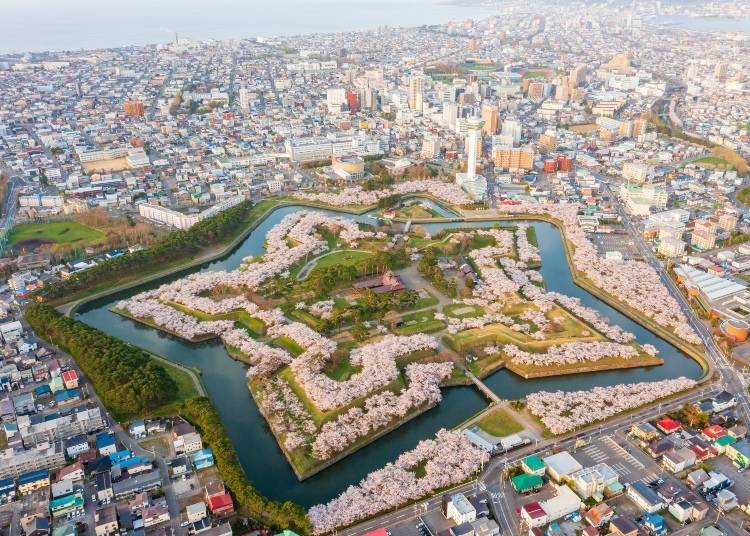
・Golden Week (end of April / beginning of May)
Golden Week is one of the biggest public holiday periods in Japan. During this time, it is crucial to keep in mind that public transport from Hakodate to Sapporo, and from Hakodate to the rest of the country via the Shinkansen network, can be packed, so reserving a seat ahead of time is recommended.
In addition, the cherry blossoms at Goryokaku often peak in late April, and crowds of people head to this area to enjoy them. Similarly, the Hakodate Goryokaku Festival in mid-May attracts tourists as well.
・Hakodate Port Festival (Early August)
The Hakodate Port Festival is the largest summer event in Hakodate, featuring over 20,000 paraders. As the event attracts many sightseers and festivalgoers, booking a hotel well in advance is advised if you will be visiting Hakodate in August.
- Area
- Category
*Prices and options mentioned are subject to change.
*Unless stated otherwise, all prices include tax.
Popular Tours & Activitiess
Recommended places for you
-
Appealing

Odori Park
Parks
Sapporo / Chitose
-
Appealing

Sapporo Ramen Yokocho
Ramen
Sapporo / Chitose
-
Appealing

Shirogane Blue Pond (Aoiike)
Rivers, Lakes & Canyons
Furano / Biei / Sounkyo
-
Appealing

Rukku and Uohei
Izakaya
Sapporo / Chitose
-

LakeAkan
Rivers, Lakes & Canyons
Abashiri
-

Sapporo Clock Tower
Landmarks
Sapporo / Chitose
-

Beyond Hakodate and Matsumae: Enjoy the Hidden Gems of Hokkaido’s Donan Area
-
Ad

Cycling Through Hokkaido: Discover the Beauty of Memuro and the Tokachi Plains
-

Scenic Road Trip from Hakodate to Matsumae: Stunning Views, Traditions, and Tasty Delights
by: Nobuka Kawashima
-

Great Local Eats: 5 Expert-Recommended Local Chain Restaurants in Hakodate
by: Nobuka Kawashima
-
Ad

Smart Ways to Avoid Crowds and Enjoy a Safe, Comfortable Trip to Noboribetsu Onsen
-
Ad

Sapporo SATUDORA Shopping Guide: Get Souvenirs, Medicine & More at This Iconic Drugstore (Special Deal Inside!)
-

8 Unfamiliar (But Totally Normal) Customs in Japan!
-

Travel Expert-Recommended! 5 Onsen Hot Spring Hotels & Inns in Otaru (Hokkaido)
by: Nobuka Kawashima
-
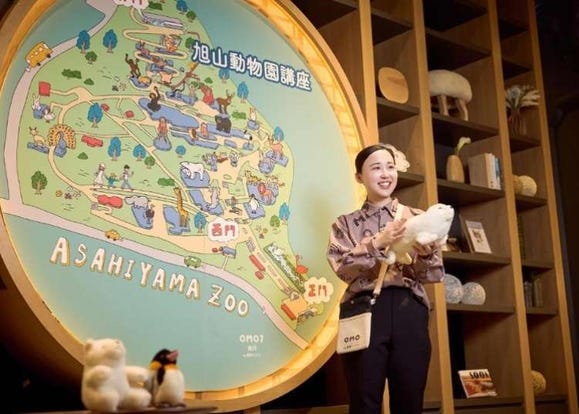
10 Family & Kid-Friendly Asahikawa Hotels Near Zoo and Sightseeing
by: Robotan
-

Otaru Travel Guide: Inside Hokkaido's Leading Destination (Sightseeing, Food, and Shopping Tips)
-

Beautiful hotel on Japan’s northern island has frozen rooms, ice outdoor bath【Photos】
-

17 Best Hotels in Sapporo City For the Perfect Stay (Great Access, Rates)
- #best sushi hokkaido
- #things to do hokkaido
- #best ramen sapporo
- #what to bring to japan
- #new years in tokyo
- #what to buy in ameyoko
- #japanese nail trends
- #what to do in odaiba
- #onsen tattoo friendly tokyo
- #daiso
- #best sweets otaru
- #japanese fashion culture
- #best nature furano
- #japanese convenience store snacks
- #best japanese soft drinks













